Search Result
Results for "
Gram-positive strain
" in MedChemExpress (MCE) Product Catalog:
1
Isotope-Labeled Compounds
| Cat. No. |
Product Name |
Target |
Research Areas |
Chemical Structure |
-
- HY-B1174
-
|
Kanamycin B
|
Antibiotic
Bacterial
|
Infection
|
|
Bekanamycin (Kanamycin B) is an aminoglycoside antibiotic produced by Streptomyces kanamyceticus, against an array of Gram-positive and Gram-negative bacterial strain .
|
-

-
- HY-163331
-
|
|
Antibiotic
Bacterial
|
Infection
|
|
Cresomycin is a bridged macrobicyclic antibiotic that can bind to the bacterial ribosome. Cresomycin exhibits efficacy against both Gram-positive and Gram-negative bacteria, including multidrug-resistant strains of Staphylococcus aureus, Escherichia coli, and Pseudomonas aeruginosa .
|
-
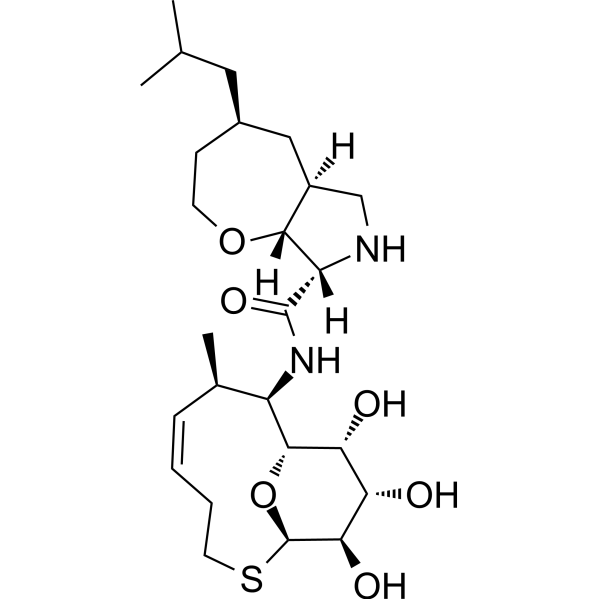
-
- HY-154861
-
|
|
Bacterial
Apoptosis
Necroptosis
|
|
|
Anticancer agent 118, a N‑acylated ciprofloxacin derivative, has anti-bacterial and anticancer activities. Anticancer agent 118 shows high activity against Gram-positive strains and antiproliferative activities against prostate PC3 cells. Anticancer agent 118 can be used for antitumor research .
|
-
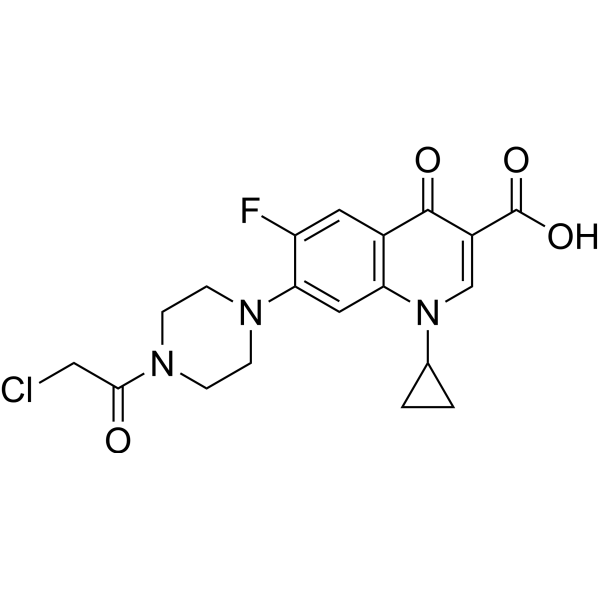
-
- HY-P5706
-
|
|
Bacterial
|
Infection
Inflammation/Immunology
|
|
HG2 is a fast-acting antimicrobial peptide. HG2 shows anti-biofilm and anti-inflammatory activities. HG2 is active against Gram-positive pathogens, especially against MRSA strains (MIC: 16-32?μg/mL). HG2 can bind to bacterial lipids and reduces ATP concentration in S. aureus MRSA USA300 cells .
|
-
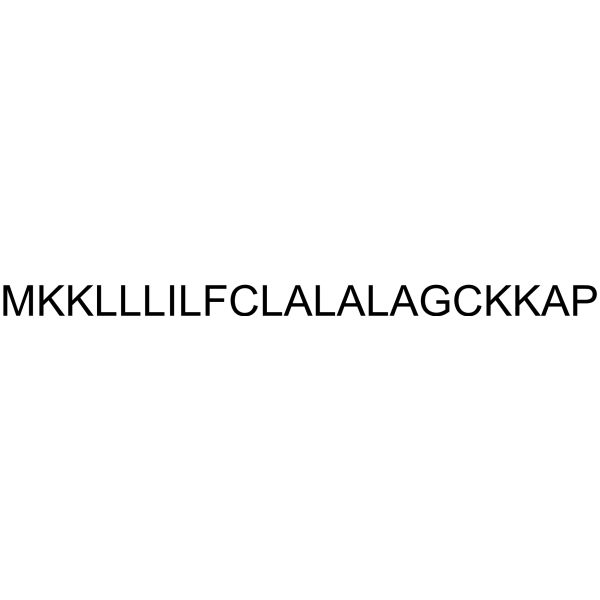
-
- HY-P5709
-
|
|
Bacterial
|
Infection
Inflammation/Immunology
|
|
HG4 is a fast-acting antimicrobial peptide. HG4 shows anti-biofilm and anti-inflammatory activities. HG4 is active against Gram-positive pathogens, especially against MRSA strains (MIC: 32-64?μg/mL). HG4 can bind to bacterial lipids and reduces ATP concentration in S. aureus MRSA USA300 cells .
|
-
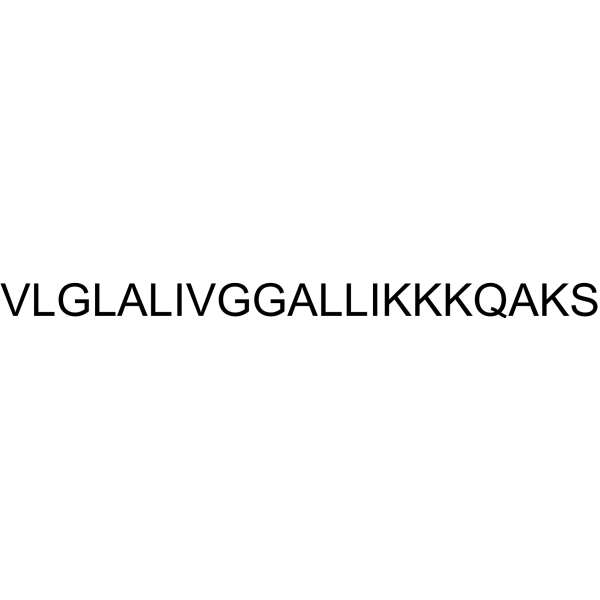
-
- HY-B0960
-
|
N-Sulfanilylbenzamide
|
Autophagy
Bacterial
Antibiotic
|
Infection
|
|
Sulfabenzamide (N-Sulfanilylbenzamide) is an antimicrobial agent and usually consumed in combination with Sulfathiazole and Sulfacetamide. Sulfabenzamide is effective against Gram-positive and negative bacterial strains .
|
-

-
- HY-155007
-
|
|
Bacterial
|
Infection
|
|
DNA gyrase B-IN-2 (Compound E) is a 2-aminobenzothiazole-based DNA gyrase B inhibitor with promising activity against ESKAPE bacterial pathogens. DNA gyrase B-IN-2 showed low nanomolar inhibition of DNA gyrase (IC50 < 10 nM) and broad-spectrum antibacterial activity against pathogens belonging to the ESKAPE group, with the minimum inhibitory concentration < 0.03 μg/mL for most Gram-positive strains and 4–16 μg/mL against Gram-negative E. coli, Acinetobacter baumannii, Pseudomonas aeruginosa, and Klebsiella pneumoniae.DNA gyrase B-IN-2 can be used for the research of infection .
|
-
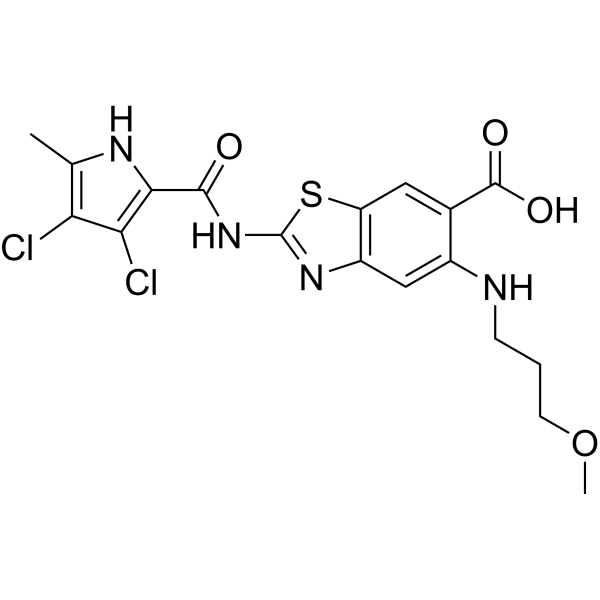
-
- HY-P5740
-
|
|
Bacterial
|
Infection
|
|
Cacaoidin is a glycosylated lantibiotic isolated from a Streptomyces cacaoi strain. Cacaoidin has potent antibacterial activity against Gram-positive pathogens including Clostridium difficile .
|
-
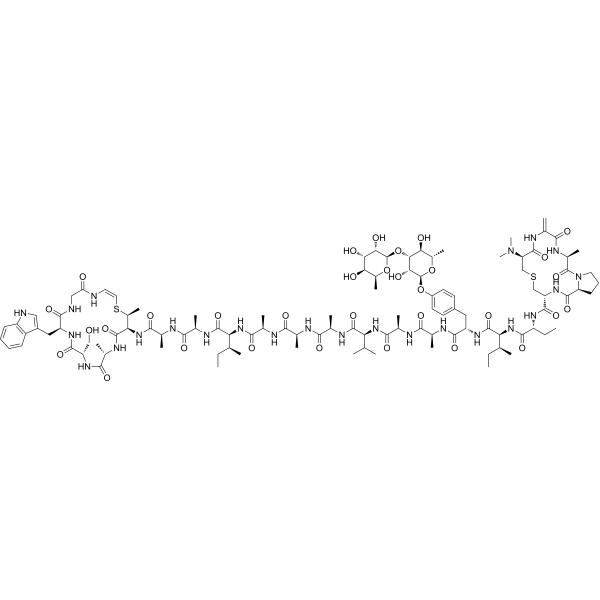
-
- HY-A0086
-
|
SCH-20569 sulfate
|
Bacterial
Antibiotic
|
Infection
|
|
Netilmicin (sulfate) (SCH-20569 (sulfate)) is an active aminoglycoside antibiotic against most Gram-negative and some Gram-positive bacteria, including certain strains resistant to gentamicin.
|
-

-
- HY-136295
-
|
|
Antibiotic
Bacterial
|
Infection
Inflammation/Immunology
|
|
Quinaldopeptin, a quinomycin antibiotic isolated from the culture of Streptoverticillium album strain, is highly active against Gram-positive bacteria and anaerobes and strongly cytotoxic against cultured B16 melanoma cells .
|
-
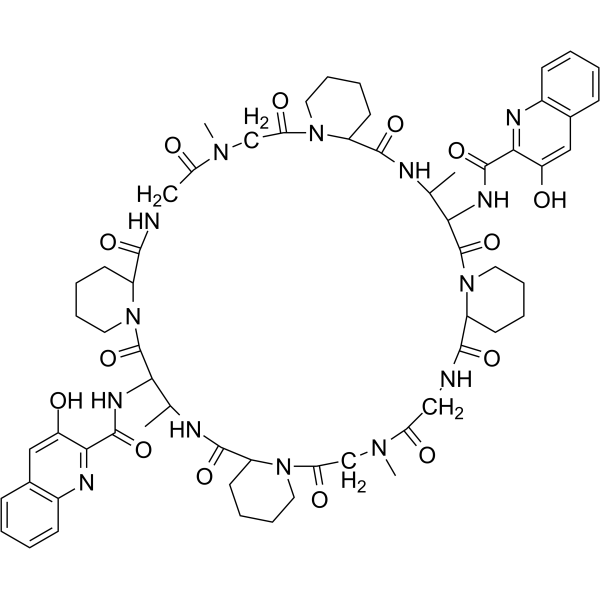
-
- HY-125414
-
|
|
Antibiotic
Bacterial
|
Infection
|
|
Lydicamycin is an antibiotic isolated from the fermentation broth of an actinomycete strain identified as Streptomyces lydicus. Lydicamycin is active against Gram-positive bacteria and a certain yeast, but inactive against Gram-negative bacteria .
|
-
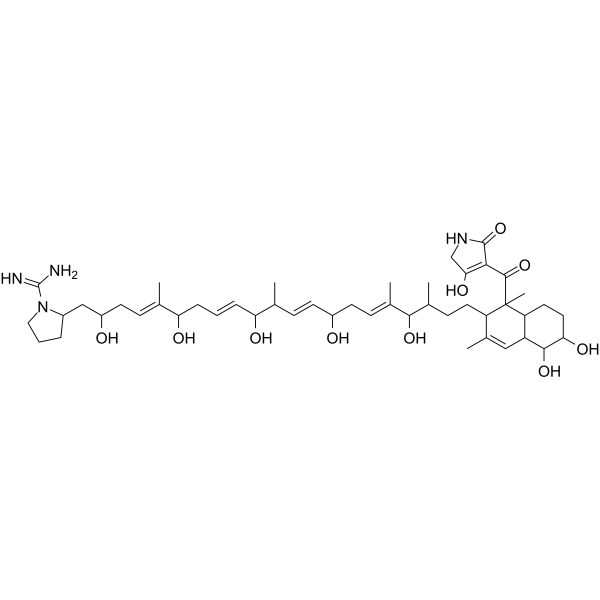
-
- HY-105387
-
-
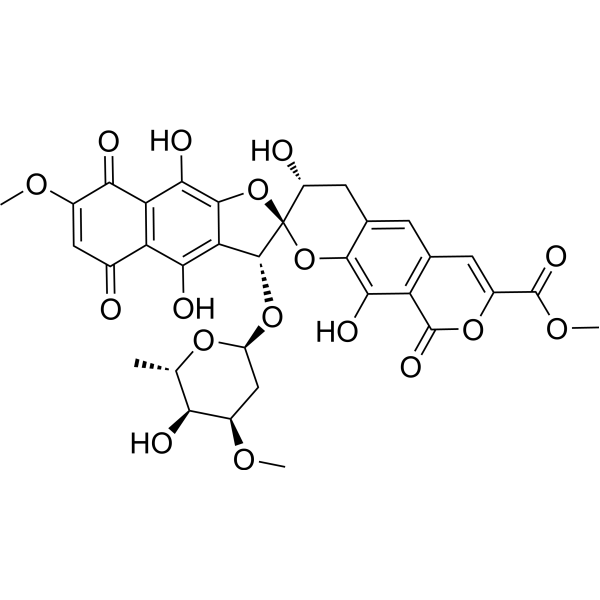
-
- HY-146470
-
|
|
Bacterial
|
Infection
|
|
Antibacterial agent 103 (compound 7) has highly antibacterial activity against kinds of Gram-positive and -negative bacteria. Antibacterial agent 103 can be used for researching inhibition of resistance bacterial strains .
|
-
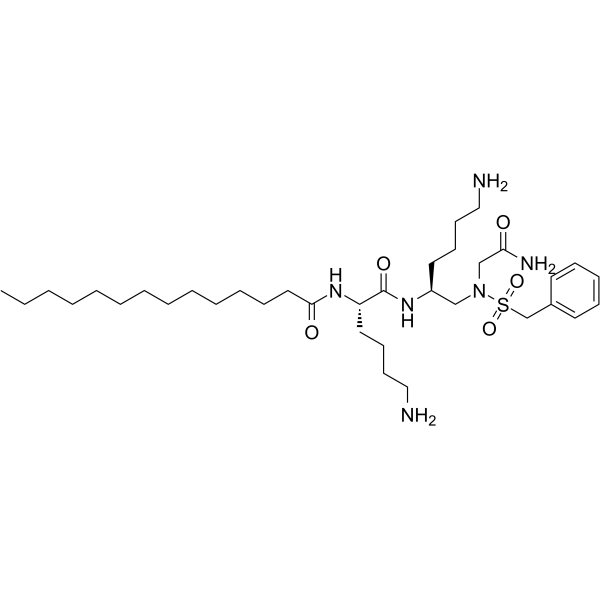
-
- HY-149379
-
|
|
Bacterial
DNA/RNA Synthesis
|
Infection
|
|
DNA gyrase B-IN-3 (Compound A) is a bacterial DNA gyrase B inhibitor (IC50: < 10 nM). DNA gyrase B-IN-3 has antibacterial activity against gram-positive strains .
|
-

-
- HY-P5546
-
|
|
Bacterial
|
Infection
|
|
Lynronne-2 is an antimicrobial peptide. Lynronne-1 is active against Gram-positive bacterials, including
MDR strains (MIC: 32-256 μg/mL for methicillin-resistant MRSA strains). Lynronne-2 is also effective against P. aeruginosa infection
|
-
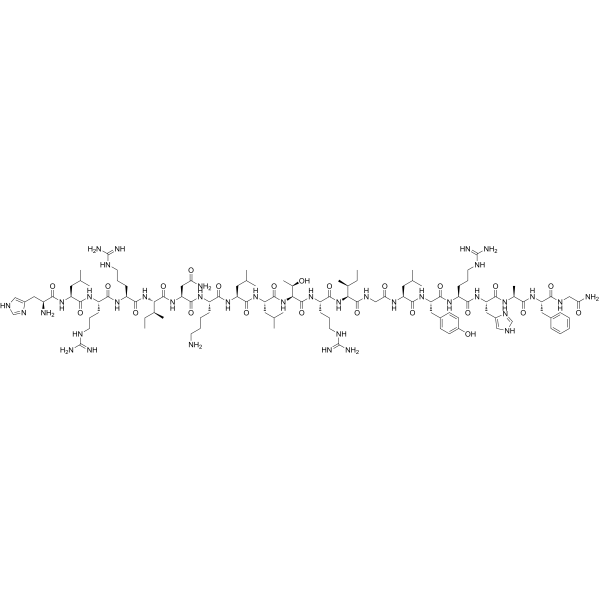
-
- HY-P5547
-
|
|
Bacterial
|
Infection
|
|
Lynronne-3 is an antimicrobial peptide. Lynronne-1 is active against Gram-positive bacterials, including
MDR strains (MIC: 32-128 μg/mL for methicillin-resistant MRSA strains). Lynronne-3 is also effective against P. aeruginosa infection
|
-
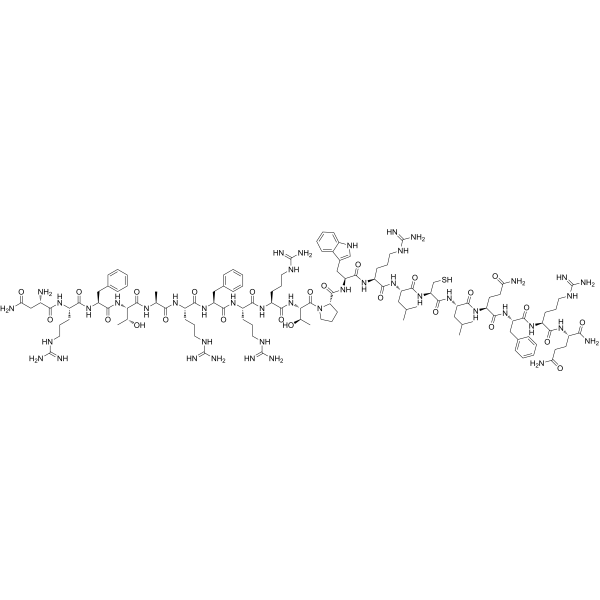
-
- HY-153429
-
|
|
Bacterial
|
Infection
|
|
WU-FA-01, a hydrogenated derivative of WU-FA-00, is an antibacterial agent that exhibits high levels of antibacterial activity against Gram-positive strains and also has some anti-inflammatory activity .
|
-
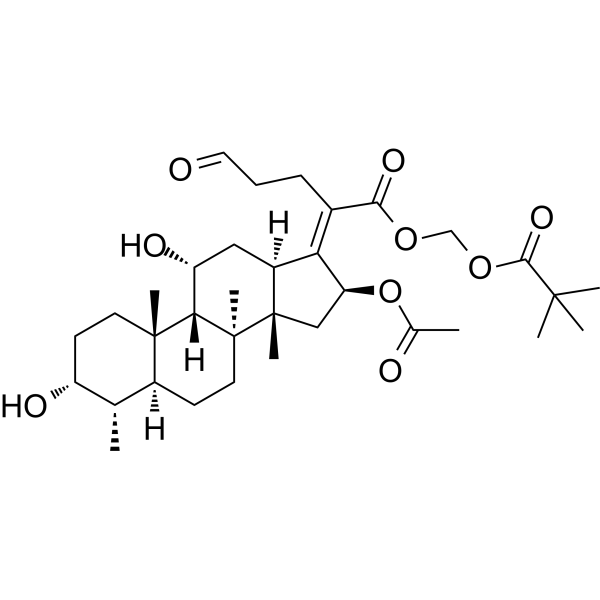
-
- HY-P5695
-
|
|
Bacterial
|
Infection
|
|
GP-2B is an antimicrobial peptide. GP-2B shows antibacterial activity against Gram-positive strain (MIC: 8-128 μg/mL for S. aureus and Enterococcus faecalis) .
|
-
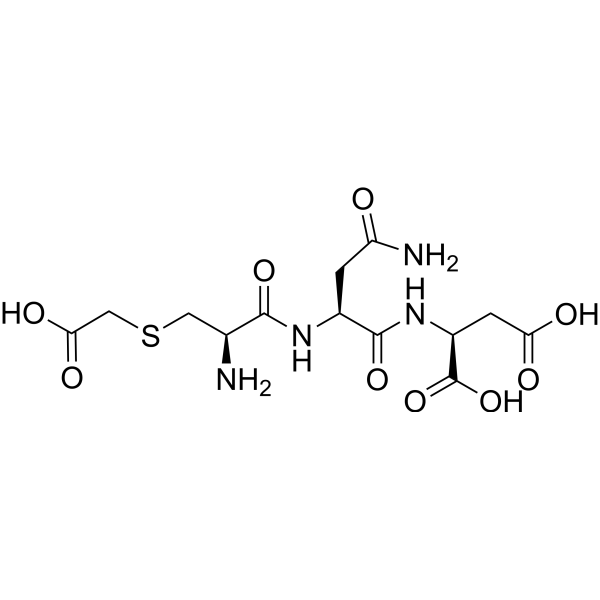
-
- HY-A0276A
-
|
|
Antibiotic
Bacterial
|
Infection
|
|
Gentamicin, an orally active aminoglycoside antibiotic, inhibits the growth of both gram-positive and gram-negative bacteria and to inhibit several strains of mycoplasma in tissue culture. Gentamicin inhibits DNase I with an IC50 of 0.57 mM .
|
-
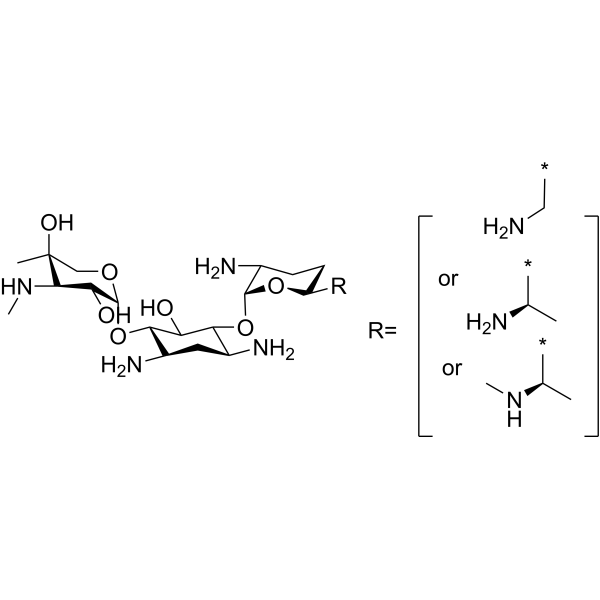
-
- HY-125524
-
|
|
Bacterial
|
Infection
|
|
Antibacterial agent 199 (Compound 2) is an activator for caseinolytic protease (ClpP) with a Kd of 0.7 μM. Antibacterial agent 199 exhibits antibacterial efficacy against Gram-positive strains Staphylococcus aureus, Streptococcus pneumoniae and Gram-negative strain Neisseria meningitidis, with MICs of 16, 0.5 and 0.5 μg/mL, respectively .
|
-
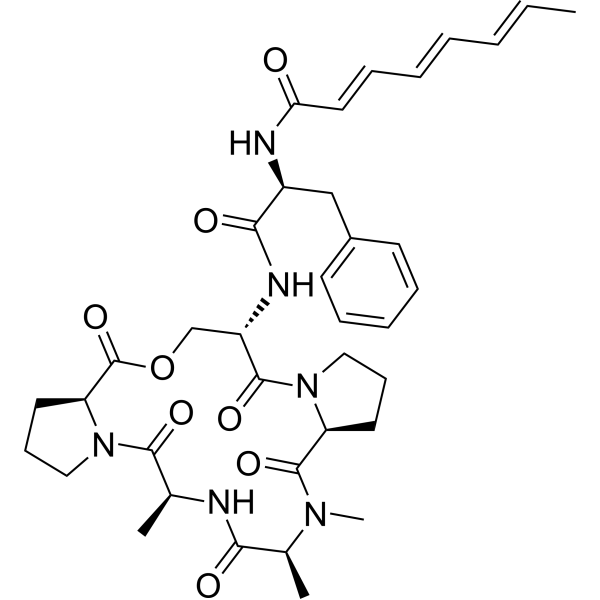
-
- HY-A0276
-
|
|
Bacterial
Antibiotic
|
Infection
Cancer
|
|
Gentamicin sulfate, an orally active aminoglycoside antibiotic, inhibits the growth of both gram-positive and gram-negative bacteria and to inhibit several strains of mycoplasma in tissue culture. Gentamicin sulfate inhibits DNase I with an IC50 of 0.57 mM .
|
-

-
- HY-N3138
-
|
|
Bacterial
|
Infection
|
|
Ombuoside is a glycoside ombuoside isolated from Gynostemma pentaphyllum.Ombuoside has antimicrobial activity against several strains of gram-positive and gram-negative bacteria and the yeast Candida albicans . Ombuoside has antioxidant effects by scavenging free radicals and ROS .
|
-
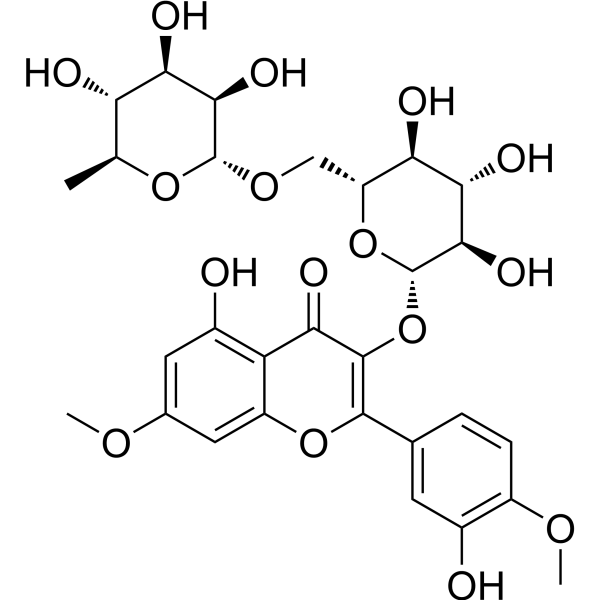
-
- HY-B0593
-
|
GR20263
|
Beta-lactamase
Bacterial
Antibiotic
|
Infection
|
|
Ceftazidime (GR20263), an antibiotic, has a broad spectrum activity against Gram-positive and Gram-negative aerobic bacteria. Ceftazidime is also active against Enterobacteriaceae (including β-lactamase-positive strains) and is resistant to hydrolysis by most β-lactamases .
|
-

-
- HY-P5545
-
|
|
Bacterial
|
Infection
|
|
Lynronne-1 is an antimicrobial peptide. Lynronne-1 is active against Gram-positive bacterials, including MDR strains (MIC: 8-32 μg/mL for methicillin-resistant MRSA strains). Lynronne-1 reduces the bacterial load in MRSA infected wound murine model. Lynronne-1 is also effective against P. aeruginosa infection .
|
-
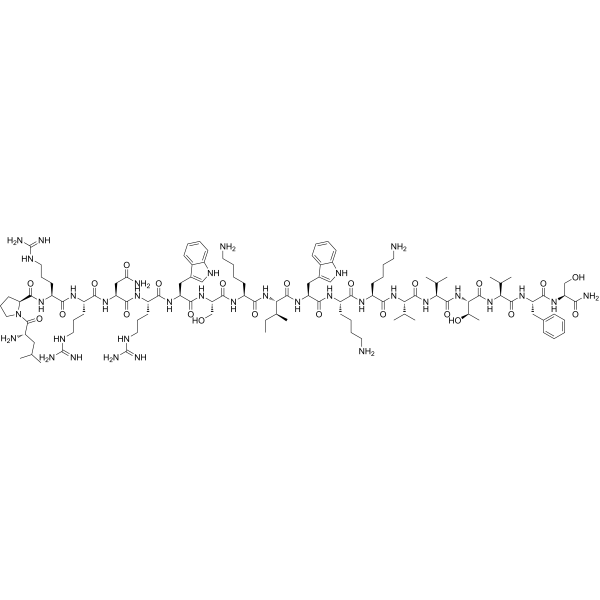
-
- HY-B0593A
-
|
GR20263 pentahydrate
|
|
|
|
Ceftazidime (GR20263) pentahydrate , an antibiotic, has a broad spectrum activity against Gram-positive and Gram-negative aerobic bacteria. Ceftazidime pentahydrate is also active against Enterobacteriaceae (including β-lactamase-positive strains) and is resistant to hydrolysis by most β-lactamases .
|
-
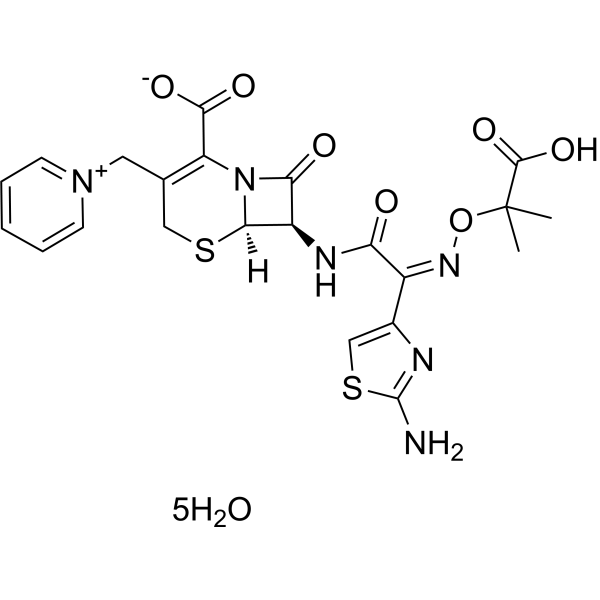
-
- HY-79635
-
|
|
Bacterial
|
Infection
|
|
Methyl indole-3-carboxylate is a natural product isolated from Sorangium cellulosum strain Soce895. Methyl indole-3-carboxylate shows a weak activity against the Gram-positive Nocardia sp with a MIC value of 33.33 μg/mL .
|
-

-
- HY-P3328
-
|
|
Bacterial
|
Infection
|
|
MDP1, a Melittin-derived peptide, alters the integrity of both Gram-positive and Gram-negative bacterial membranes and kills the bacteria via membrane damages. MDP1 has a high-antibacterial activity against multidrug resistant (MDR) and reference strains of S. aureus, E. coli, and P. aeruginosa .
|
-
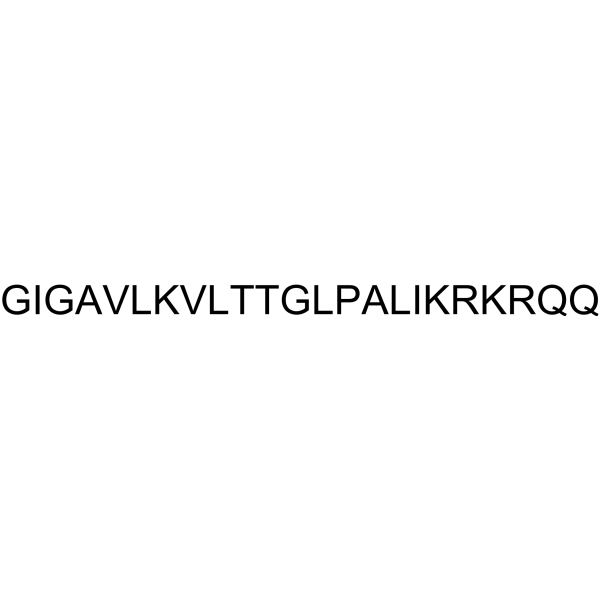
-
- HY-P3328A
-
|
|
Bacterial
|
Infection
|
|
MDP1 acetate, a Melittin-derived peptide, alters the integrity of both Gram-positive and Gram-negative bacterial membranes and kills the bacteria via membrane damages. MDP1 acetate has a high-antibacterial activity against multidrug resistant (MDR) and reference strains of S. aureus, E. coli, and P. aeruginosa .
|
-
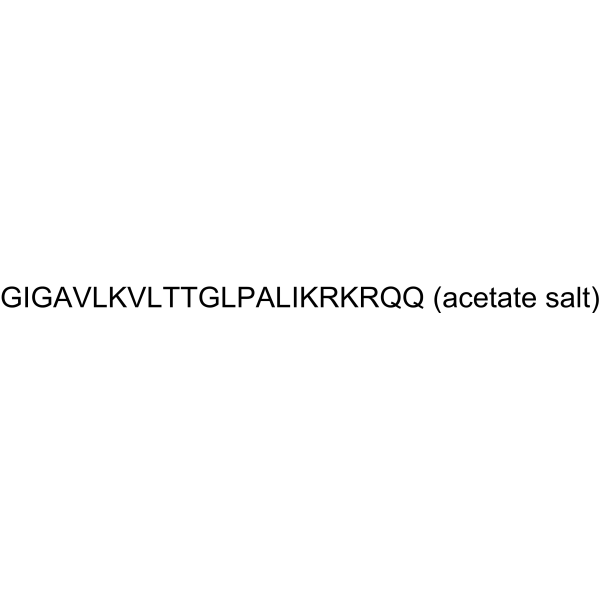
-
- HY-B1286
-
|
Sodium piperacillin
|
Bacterial
Antibiotic
Penicillin-binding protein (PBP)
|
Infection
|
|
Piperacillin sodium is a semisynthetic broad-spectrum β-lactam antibiotic which exhibits potent bactericidal activity against Gram-negative bacteria as well as select Gram-positive strains through penicillin-binding proteins. Piperacillin is most commonly used in combination with the β-lactamase inhibitor Tazobactam .
|
-
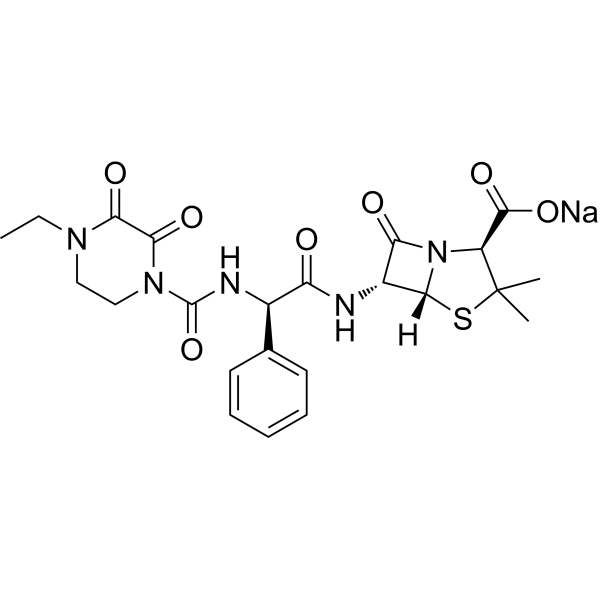
-
- HY-B1923
-
|
Pipracil
|
|
|
|
Piperacillin is a semisynthetic broad-spectrum β-lactam antibiotic which exhibits potent bactericidal activity against Gram-negative bacteria as well as select Gram-positive strains through penicillin-binding proteins. Piperacillin is most commonly used in combination with the β-lactamase inhibitor Tazobactam .
|
-

-
- HY-149925
-
|
|
Bacterial
DNA/RNA Synthesis
Topoisomerase
|
Infection
|
|
Antibacterial agent 138 is a benzothiazole inhibitor of bacterial DNA gyrase and topoisomerase IV. Antibacterial agent 138 exhibits favorable solubility and plasma protein binding. Antibacterial agent 138 has antibacterial activity against Gram-positive and Gram-negative strains. Antibacterial agent 138 is a dual GyrB and ParE inhibitor .
|
-
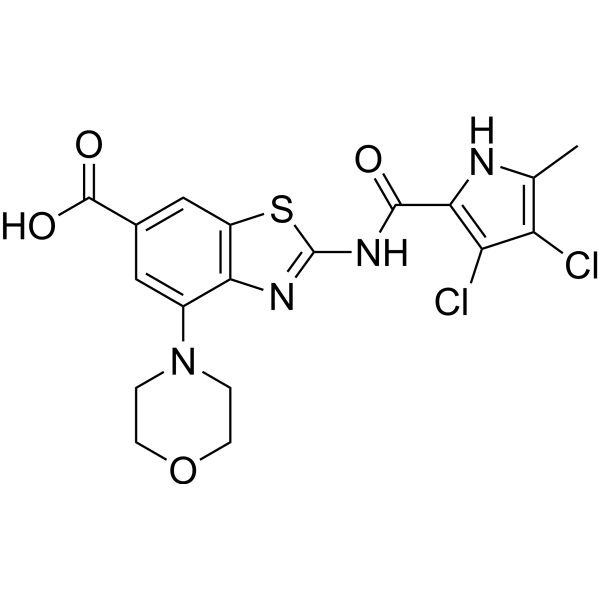
-
- HY-13234
-
|
|
Bacterial
Antibiotic
DNA/RNA Synthesis
|
Infection
Cancer
|
|
Rifaximin, a gastrointestinal-selective antibiotic, binds the β-subunit of bacterial DNA-dependent RNA polymerase, resulting in inhibition of bacterial RNA synthesis. Rifaximin susceptibility is higher against Gram-positive strains (MIC: 0.03-5 mg/ml) compared to Gram-negative bacteria (MIC: 8-50 mg/mL) .
|
-

-
- HY-119789
-
|
|
Antibiotic
Bacterial
|
Infection
|
|
Albofungin (Antibiotic P-42-1) is isolated from the culture filtrate of Actinomyces tumemacerans strain INMI.P-42. Albofungin shows highly active on a wide variety of gram-positive bacteria and fungi. Albofungin shows cytotoxic to HeLa cell cultures and exhibited antitumor activity on EHRLICH ascites tumor in mice.
|
-

-
- HY-125733
-
|
|
Bacterial
Antibiotic
|
Infection
|
|
Thiocillin I is a thiopeptide antibiotic and has in vitro antibacterial activity against Gram-positive bacterial strains. The MIC values of Thiocillin I against S. aureus 1974149, E. faecalis 1674621, B. subtilis ATCC 6633 and S. pyogenes 1744264 are 2 μg/mL, 0.5 μg/mL, 4 μg/mL and 0.5 μg/mL, respectively .
|
-
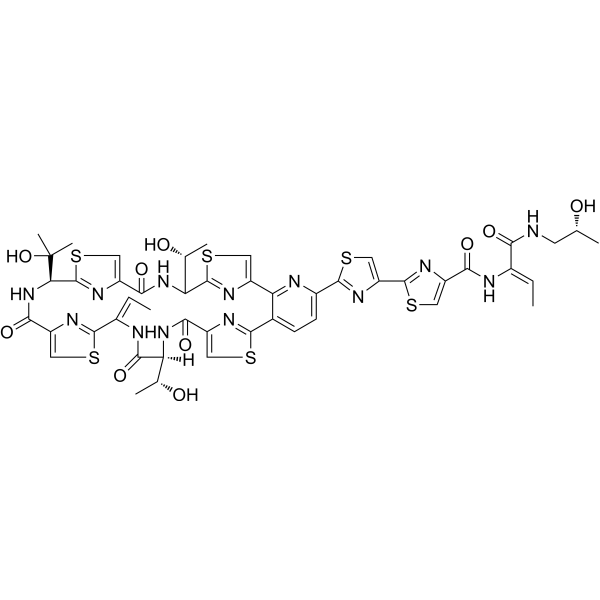
-
- HY-133119
-
|
|
Bacterial
|
Infection
|
|
PK150, an analogue of Sorafenib, shows oral bioavailability and antibacterial activity against several pathogenic strains at submicromolar concentrations. PK150 inhibits Gram-positive Methicillin-sensitive S. aureus (MSSA), Methicillin-resistant S. aureus (MRSA), Vancomycin intermediate S. aureus (VISA) with MICs of 0.3, 0.3-1, 0.3 µM, respectively .
|
-
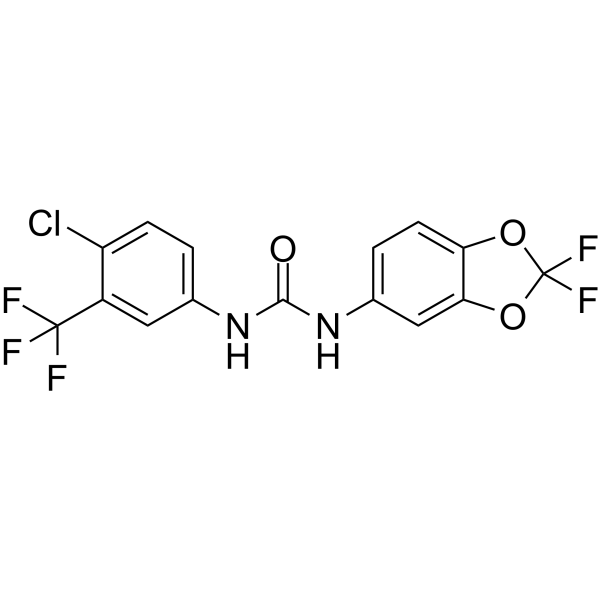
-
- HY-160669
-
|
|
Bacterial
|
Infection
|
|
Antibacterial agent 198 (Compound 16) is an antibacterial agent against gram positive Staphylococcus aureus and strains of Entercoccus .
|
-
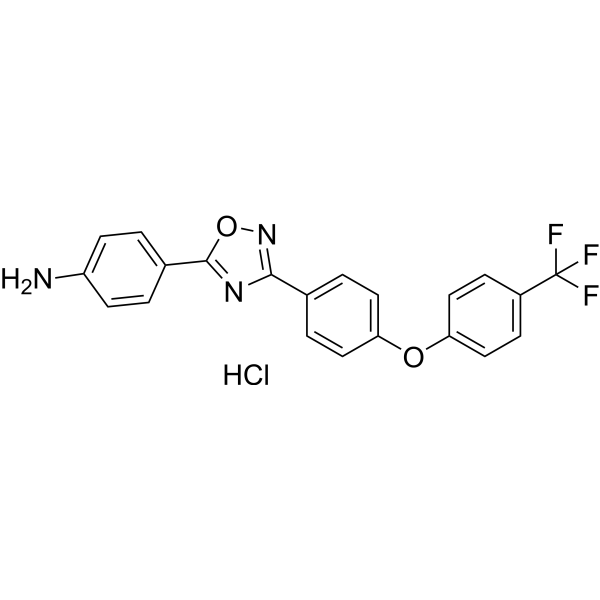
-
- HY-125728
-
|
|
Bacterial
Parasite
HCV
|
Infection
|
|
Micrococcin P1 is a macrocyclic peptide antibiotic and is a potent hepatitis C virus (HCV) inhibitor with an EC50 range of 0.1-0.5 μM . Micrococcin P1 has in vitro antibacterial activity against Gram-positive bacterial strains. The MIC values of Micrococcin P1 against S. aureus 1974149, E. faecalis 1674621 and S. pyogenes 1744264 are 2 μg/mL, 1 μg/mL and 1 μg/mL, respectively . Micrococcin P1 is also a potent inhibitor of the malaria parasite Plasmodium falciparum .
|
-

-
- HY-N10282
-
-
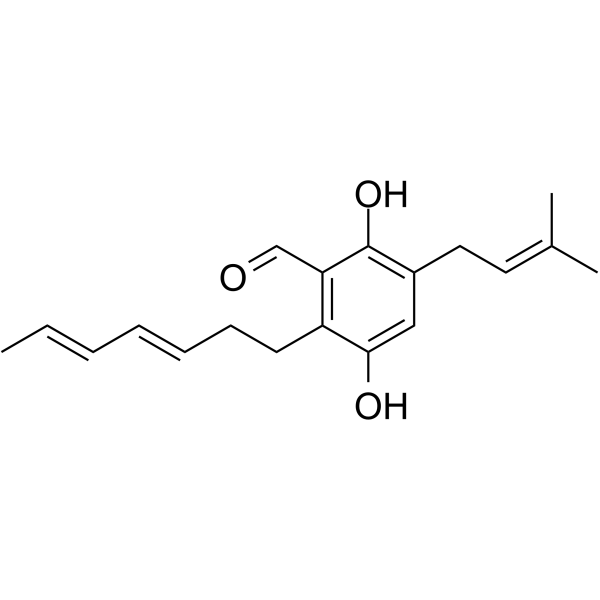
-
- HY-N8461
-
|
3-Hydroxypropionaldehyde; 3-Hydroxypropanal
|
Bacterial
|
Infection
|
|
Reuterin is a broad-spectrum antimicrobial agent active against Gram positive and Gram negative bacteria, as well as yeasts, moulds and protozoa. Reuterin is produced by specific strains of Lactobacillus reuteri during anaerobic metabolism of glycerol. Reuterin also demonstrates potent antimicrobial activity against a broad panel of human and poultry meat campylobacter spp. Isolates .
|
-
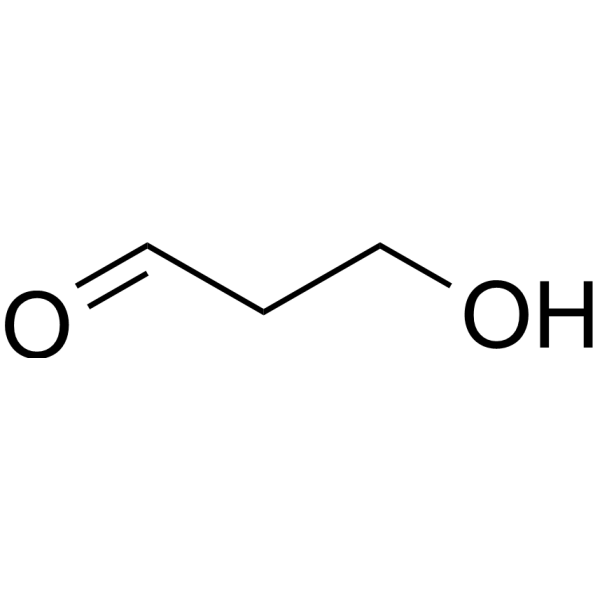
-
- HY-B0960S
-
-
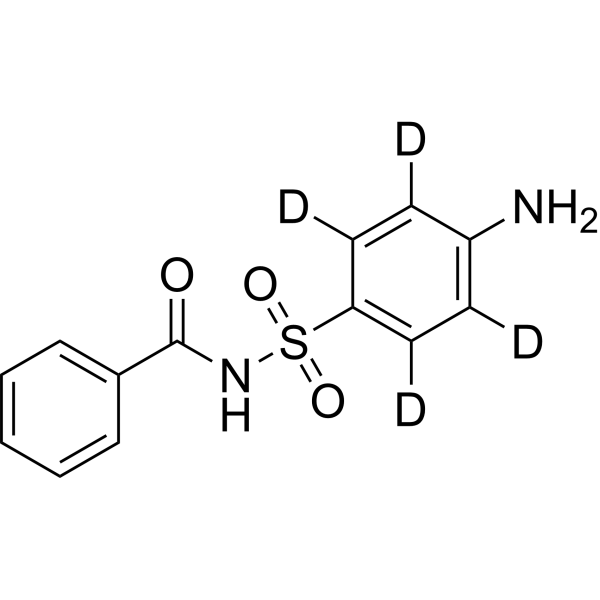
-
- HY-P5710
-
|
|
Bacterial
|
Infection
|
|
LCI peptide is an antimicrobial peptide with antibacterial activity. LCI peptide is active against plant pathogens, Xanthomonas and Pseudomonas, including E. coli, Gentamicin-resistant MRSA and Xoo .
|
-
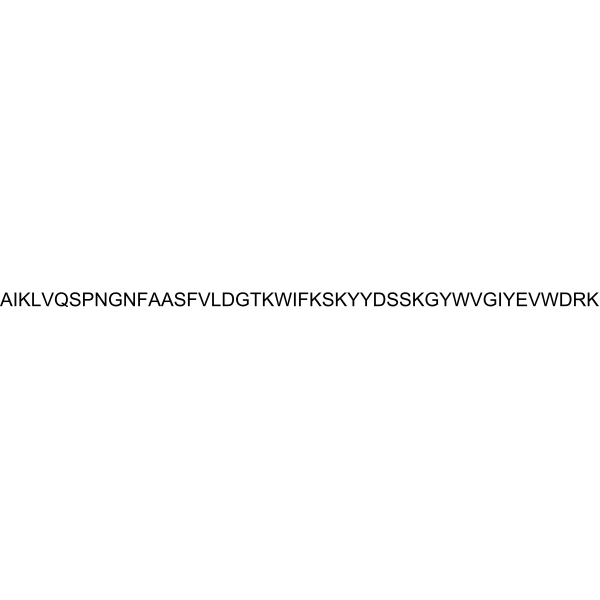
-
- HY-P5557
-
|
|
Bacterial
Necroptosis
|
Cancer
|
|
TP4 (Nile tilapia piscidin) is an orally active piscidin-like antimicrobial peptide. TP4 inhibits multiple gram positive and negative strains (MIC: 0.03-10 μg/mL). TP4 shows hemolytic activities. TP4 enhances immune response, antioxidant activity, and intestinal health against bacterial infections. TP4 also has anti-tumor effect, and induces necrosis by triggering mitochondrial dysfunction in cancer cells .
|
-
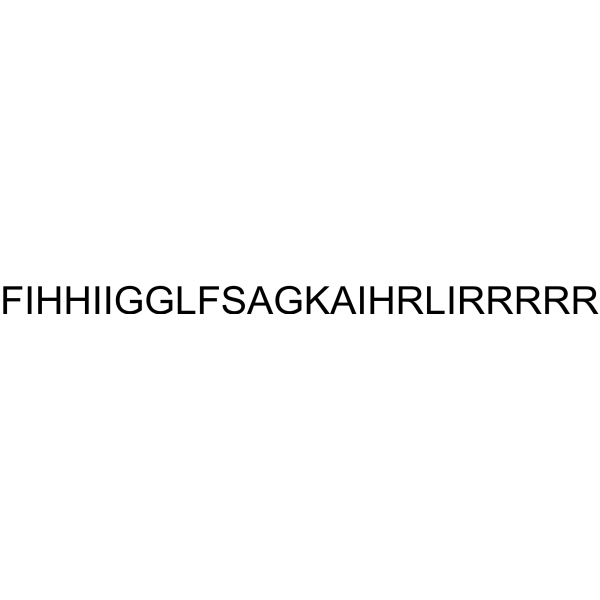
| Cat. No. |
Product Name |
Target |
Research Area |
-
- HY-P5706
-
|
|
Bacterial
|
Infection
Inflammation/Immunology
|
|
HG2 is a fast-acting antimicrobial peptide. HG2 shows anti-biofilm and anti-inflammatory activities. HG2 is active against Gram-positive pathogens, especially against MRSA strains (MIC: 16-32?μg/mL). HG2 can bind to bacterial lipids and reduces ATP concentration in S. aureus MRSA USA300 cells .
|
-
- HY-P5709
-
|
|
Bacterial
|
Infection
Inflammation/Immunology
|
|
HG4 is a fast-acting antimicrobial peptide. HG4 shows anti-biofilm and anti-inflammatory activities. HG4 is active against Gram-positive pathogens, especially against MRSA strains (MIC: 32-64?μg/mL). HG4 can bind to bacterial lipids and reduces ATP concentration in S. aureus MRSA USA300 cells .
|
-
- HY-P5740
-
|
|
Bacterial
|
Infection
|
|
Cacaoidin is a glycosylated lantibiotic isolated from a Streptomyces cacaoi strain. Cacaoidin has potent antibacterial activity against Gram-positive pathogens including Clostridium difficile .
|
-
- HY-P5546
-
|
|
Bacterial
|
Infection
|
|
Lynronne-2 is an antimicrobial peptide. Lynronne-1 is active against Gram-positive bacterials, including
MDR strains (MIC: 32-256 μg/mL for methicillin-resistant MRSA strains). Lynronne-2 is also effective against P. aeruginosa infection
|
-
- HY-P5547
-
|
|
Bacterial
|
Infection
|
|
Lynronne-3 is an antimicrobial peptide. Lynronne-1 is active against Gram-positive bacterials, including
MDR strains (MIC: 32-128 μg/mL for methicillin-resistant MRSA strains). Lynronne-3 is also effective against P. aeruginosa infection
|
-
- HY-P5695
-
|
|
Bacterial
|
Infection
|
|
GP-2B is an antimicrobial peptide. GP-2B shows antibacterial activity against Gram-positive strain (MIC: 8-128 μg/mL for S. aureus and Enterococcus faecalis) .
|
-
- HY-P5545
-
|
|
Bacterial
|
Infection
|
|
Lynronne-1 is an antimicrobial peptide. Lynronne-1 is active against Gram-positive bacterials, including MDR strains (MIC: 8-32 μg/mL for methicillin-resistant MRSA strains). Lynronne-1 reduces the bacterial load in MRSA infected wound murine model. Lynronne-1 is also effective against P. aeruginosa infection .
|
-
- HY-P3328
-
|
|
Bacterial
|
Infection
|
|
MDP1, a Melittin-derived peptide, alters the integrity of both Gram-positive and Gram-negative bacterial membranes and kills the bacteria via membrane damages. MDP1 has a high-antibacterial activity against multidrug resistant (MDR) and reference strains of S. aureus, E. coli, and P. aeruginosa .
|
-
- HY-P3328A
-
|
|
Bacterial
|
Infection
|
|
MDP1 acetate, a Melittin-derived peptide, alters the integrity of both Gram-positive and Gram-negative bacterial membranes and kills the bacteria via membrane damages. MDP1 acetate has a high-antibacterial activity against multidrug resistant (MDR) and reference strains of S. aureus, E. coli, and P. aeruginosa .
|
-
- HY-P5710
-
|
|
Bacterial
|
Infection
|
|
LCI peptide is an antimicrobial peptide with antibacterial activity. LCI peptide is active against plant pathogens, Xanthomonas and Pseudomonas, including E. coli, Gentamicin-resistant MRSA and Xoo .
|
-
- HY-P5557
-
|
|
Bacterial
Necroptosis
|
Cancer
|
|
TP4 (Nile tilapia piscidin) is an orally active piscidin-like antimicrobial peptide. TP4 inhibits multiple gram positive and negative strains (MIC: 0.03-10 μg/mL). TP4 shows hemolytic activities. TP4 enhances immune response, antioxidant activity, and intestinal health against bacterial infections. TP4 also has anti-tumor effect, and induces necrosis by triggering mitochondrial dysfunction in cancer cells .
|
| Cat. No. |
Product Name |
Category |
Target |
Chemical Structure |
| Cat. No. |
Product Name |
Chemical Structure |
-
- HY-B0960S
-
|
|
|
Sulfabenzamide-d4 is the deuterium labeled Thiabendazole.
|
-

Your information is safe with us. * Required Fields.
Inquiry Information
- Product Name:
- Cat. No.:
- Quantity:
- MCE Japan Authorized Agent:


















































